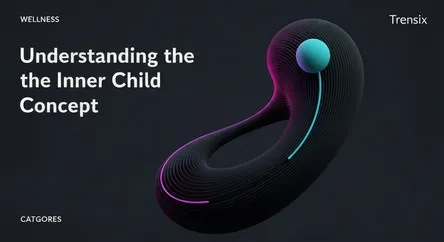Wellness
Understanding the Inner Child Concept

Explore the inner child concept, why it's a major wellness trend, and how healing your inner child can improve your mental and emotional well-being.
What is it?
The "inner child" is a psychological concept representing the childlike part of your personality that remains within you as an adult. With theoretical roots in Carl Jung's work, it encompasses the collection of your childhood experiences, memories, and emotions. This subpersonality holds onto both the joy and creativity of youth, as well as the hurt and unmet needs from your past. It is the part of your subconscious that often drives your emotions, gut reactions, and behaviors, particularly when current situations trigger old feelings from childhood.
Why is it trending?
The concept has surged in popularity, largely driven by social media platforms like TikTok where #innerchildhealing has billions of views. This trend reflects a growing collective interest in mental health, self-awareness, and breaking cycles of generational trauma. In a stressful world, many are turning inward, using nostalgia and inner child work as a way to process past experiences and reconnect with joy and authenticity. It's become a widely accessible way for people to frame their self-healing journey, making complex psychological ideas more relatable.
How does it affect people?
An unhealed "wounded" inner child can manifest in adulthood as anxiety, low self-esteem, unhealthy relationship patterns, and difficulty regulating emotions. The process of "inner child work" involves acknowledging and nurturing this part of yourself to heal past wounds. Addressing these unmet needs can lead to profound benefits, including improved emotional regulation, higher self-compassion, and healthier relationships. By reconnecting with their inner child, people can break free from limiting behaviors, increase their sense of personal empowerment, and rediscover playfulness and creativity in their lives.